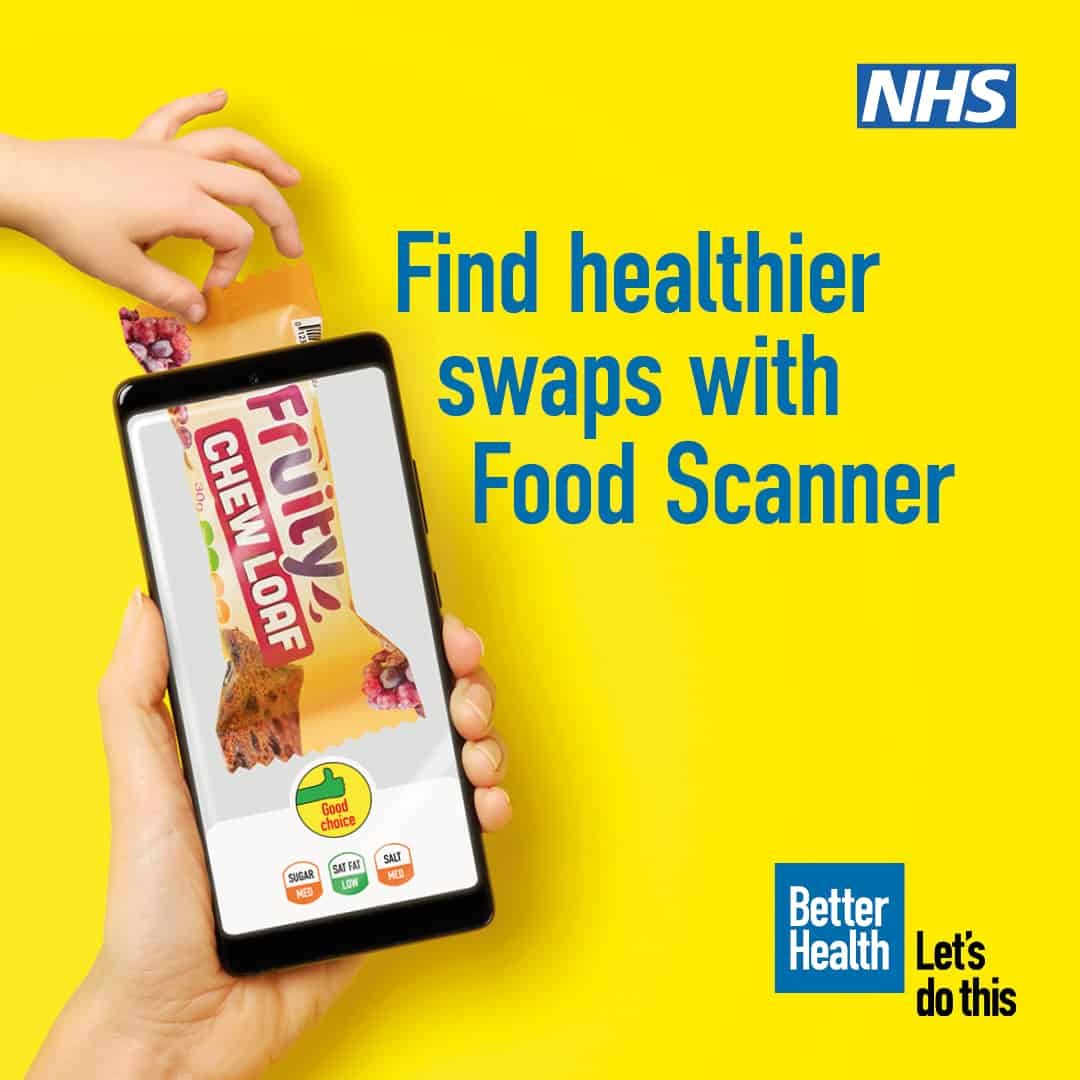In England, the Department of Health and Social Care (DHSC) offers an increasingly wide range of public health-related apps. One of the most recently launched is the ‘Food Scanner’, which aims to provide ‘swap suggestions, which means finding healthier choices for your family is easier than ever!’.
This is part of a broader public health effort to tackle, among other issues, child obesity, and is currently supported by a strong media push aimed primarily at parents. As the parent of two young children, this clearly caught my attention.
The background for this public health intervention is clear:
Without realising it, we are all eating too much sugar, saturated fat and salt. Over time this can lead to harmful changes on the inside and increases the risk of serious diseases in the future. Childhood obesity is a growing issue with figures showing that in England, more than 1 in 4 children aged 4-to 5-years-old and more than 1 in 3 children aged 10 and 11-years-old are overweight or obese.
The Be Food Smart campaign empowers families to take control of their diet by making healthier food and drink choices. The free app works by scanning the barcode of products, revealing the total sugar, saturated fat and salt inside and providing hints and tips adults plus fun food detectives activities for kids.
No issues with that. My family and myself could do with a few healthier choices. So I downloaded the app and started playing around.
As I scanned a couple of (unavoidably) branded products from the cupboard, I realised that the swaps were not for generic, alternative, healthier products, but also for branded products (often of a different brand). While this has the practical advantage of specifying the recommended healthier alternative in an ‘actionable’ manner for the consumer, this made my competition lawyer part of the brain uneasy.
The proposed swaps were (necessarily) ranked and limited, with a ‘top 3’ immediately on display, and with a possibility to explore further swaps not too easy to spot (unless you scrolled down to the bottom). The different offered swaps also had a ‘liked’ button with a counter (still in very low numbers, probably because the app is very new), but those ‘likes’ did not seem to establish ranking (or alter it?), as lower ranked items could have higher like counts (in my limited experiment).
I struggled to make sense of how products are chosen and presented. This picked my interest, so I looked at how the swaps ‘work’.
The in-app information explained that:
How do we do this?
We look into 3 aspects of the product that you have scanned:
1) Product name; so we can try and find similar products based on the words used within the name.
2) Ingredients list; so we can try and find similar products based on the ingredients of the product you have scanned.
3) Pack size; finally we look into the size of the product you have scanned so that, if have scanned a 330ml can, we can try and show you another can-sized product rather than a 1 litre bottle.How are they ordered?
We have a few rules as to what we show within the top 3. We reserve spaces for:
1) The same manufacturer; if you have scanned a particular brand we will do our best to try and find a healthier version of that same brand which qualifies for a good choice badge.
2) The same supermarket; if you have scanned a supermarket product we will again do our best to show you an alternative from the same store.
3) Partner products; there are certain products which team up with Change4life that we will try and show if they match the requirements of the products you have scanned.
I could see that convenience and a certain element of ‘competition neutrality’ were clearly at play, but a few issues bothered me, especially as the interaction between manufacturer/supermarket is not too clear and there is a primary but nebulous element of preferencing that I was not expecting in an app meant to provide product-based information. I could see myself spending the night awake, trying to find out how that ‘partnership’ is structured, what are the conditions for participating, if there are any financial flows to the Department and/or to partner organisations, etc.
I also realised some quirks or errors in the way information is processed and presented by the Food Scanner app, such as the exact same product (in different format) being assigned different ‘red light’ classifications (see the Kellogg’s Corn Flakes example on the side bar). At a guess, it could be that these divergences come from the fact that there is no single source for the relevant information (it would seem that ‘The nutrient data provided in the app is supplied by Brandbank and FoodSwitch’) and that there is not an entity overseeing the process and curating the data as necessary. In fact, DHSC’s terms and conditions for the Food Scanner app (at 6.10) explicitly state that ‘We do not warrant that any such information is true or accurate and we exclude all liability in respect of the accuracy, completeness, fitness for purpose or legality of that information’ . Interesting…
It is also difficult to see how different elements of the red light system (ie sugar vs saturated fat vs salt) are subject to trade-offs as eg, sometimes, a red/green/yellow product is recommended swapping with a yellow/yellow/yellow product. Working out the scoring system behind such recommendations seems difficult, as there will necessarily be a trade off between limiting (very) high levels of one of the elements against recommending products that are ‘not very healthy’ on all counts. There has to be a system behind this — in the end, there has to be an algorithm underpinning the app. But how does it work and what science informs it?
These are all questions I am definitely interested in exploring. However, I called it a night and planned to look for some help to investigate this properly (a small research project is in the making and I have recruited a fantastic research associate — keep an eye on the blog for more details). For now, I can only jot down a few thoughts on things that will be interesting to explore, to which I really have no direct answers.
The Food Scanner is clearly a publicly endorsed (and owned? developed?) recommender system. However, using a moderate research effort, it is very difficult to access useful details on how it works. There is no published algorithmic transparency template (that I could find). The in-app explanations of how the recommender system works raise more questions than they answer.
There is also no commitment by the DHSC to the information provided being ‘true or accurate’, not to mention complete. This displaces the potential liability and all the accountability for the information on display to (a) Brandbank, a commercial entity within the multinational Nielsen conglomerate, and to (b) Foodswitch, a data-technology platform developed by The George Institute for Global Health. The role of these two institutions, in particular concerning the ‘partnership’ between manufacturers and Change4life (now ‘Better Health’ and, effectively, the Office for Health Improvement & Disparities in the DHSC?), is unclear. It is also unclear whether the combination of the datasets operated by both entities is capable of providing a sufficiently comprehensive representation of the products effectively available in England and, in any case, it seems clear to me that there is a high risk (or certainty) that non mass production/consumption ‘healthy products’ are out of the equation. How this relates to broader aspects of competition, but also of public health policy, can only raise questions.
Additionally, all of this raises quite a few issues from the perspective of the trustworthiness that this type of app can command, as well as the broader competition law implications resulting from the operation of the Food Scanner.
And I am sure that more and more questions will come to mind as I spend more time obsessing about it.
Beyond the specificities of the case, it seems to me that the NHS Food Scanner app is a good springboard to explore the regulation of public sector recommender systems more generally — or, rather, some of the risks implicit in the absence of specific regulation and the difficulties in applying standard regulatory mechanisms (and, perhaps, especially competition law) in this context. Hopefully, there will be some interesting research findings to report by the summer. Stay tuned, and keep healthy!








